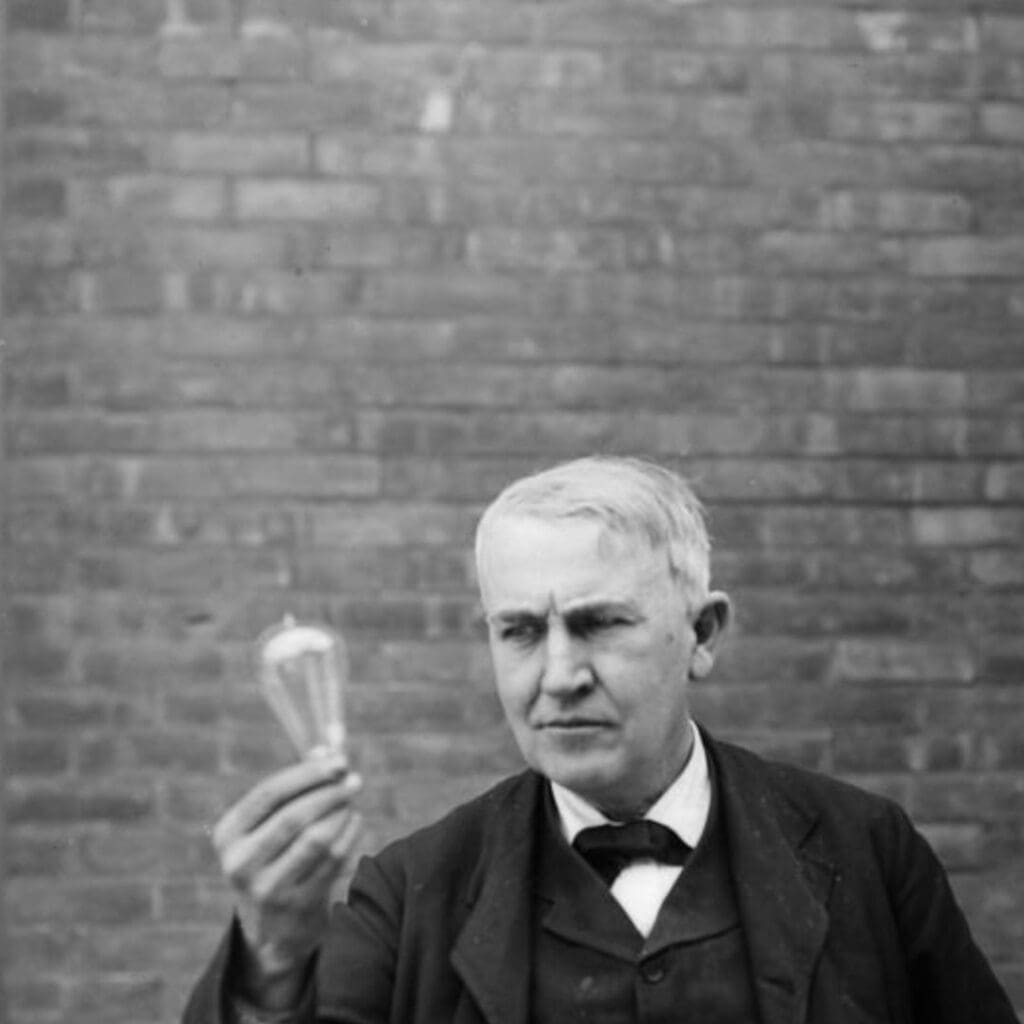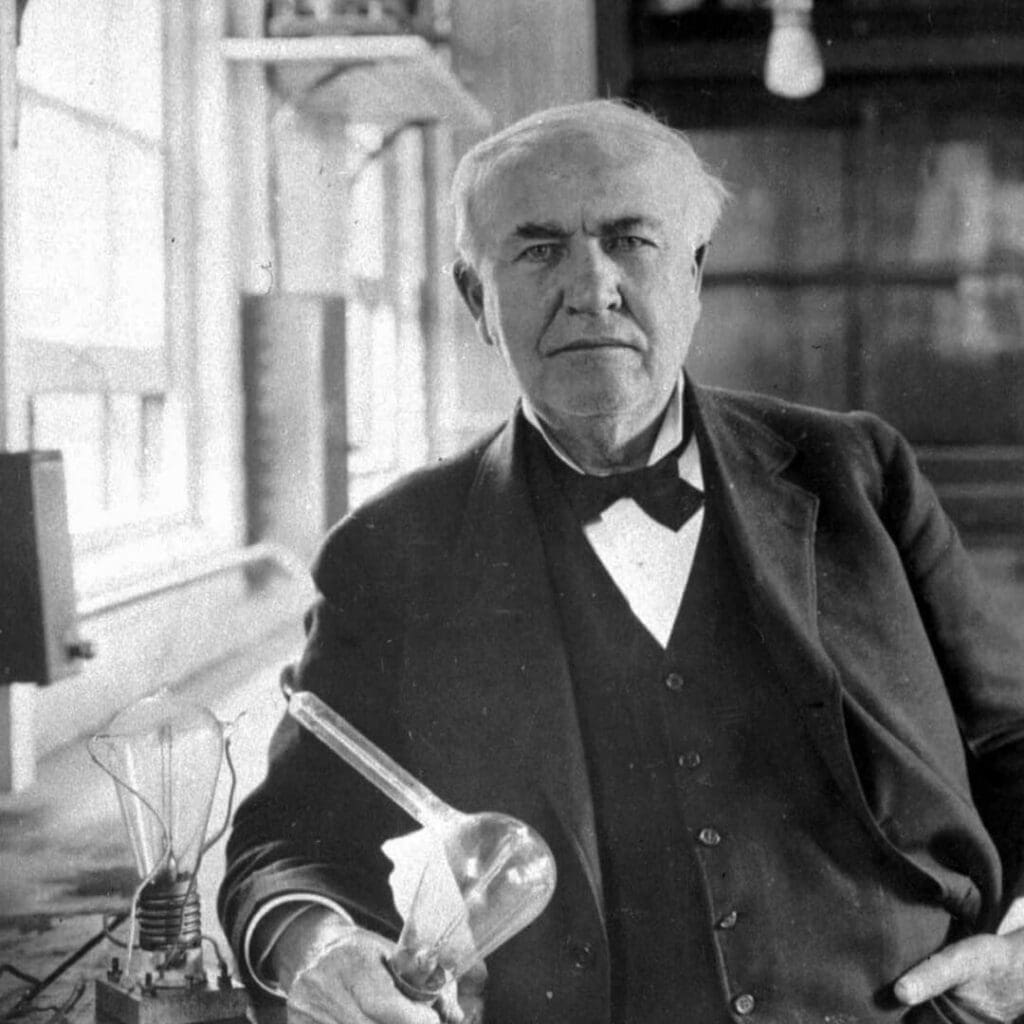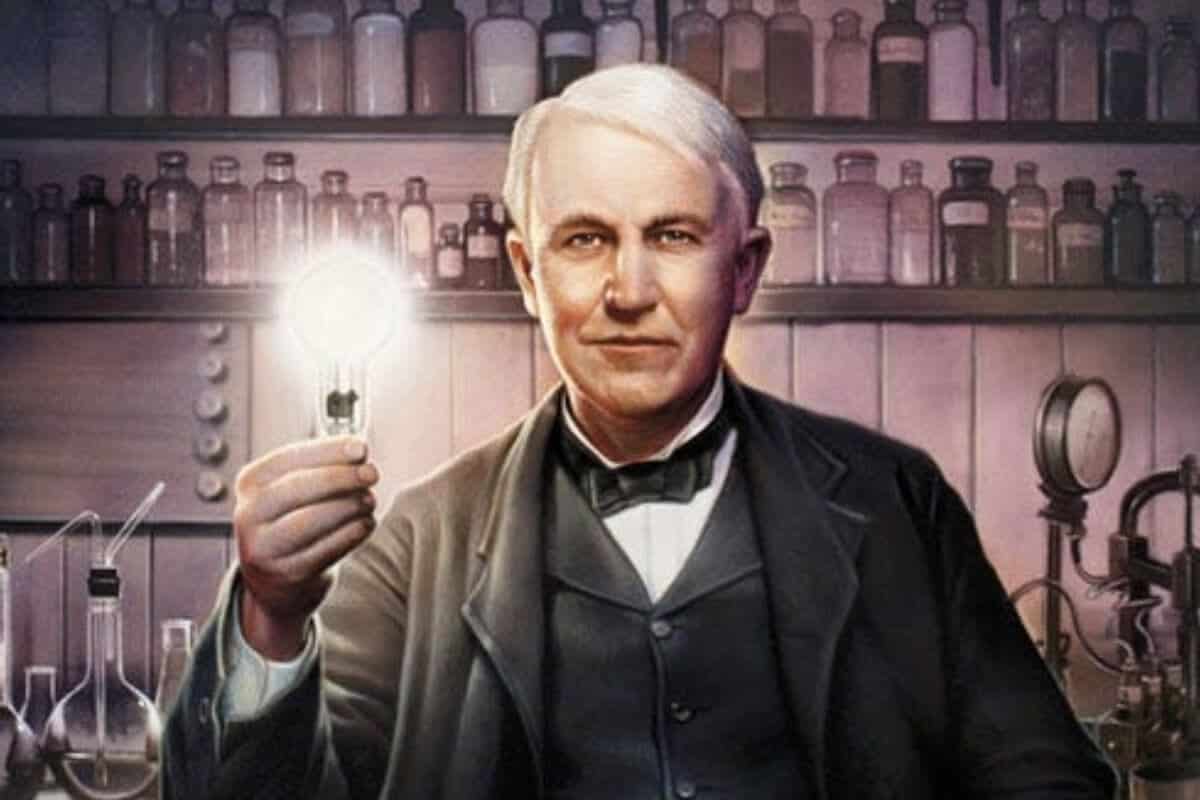In the dynamic world of technology, it is rare to witness a transformation as significant as the one spearheaded by Edison LED light bulbs. Originating from a humble beginning, these bulbs have evolved into a beacon of efficiency and sustainability, fostering a revolution in the lighting industry.
The remarkable journey of Edison LED light bulbs epitomizes a story of innovation and resilience, from the original design principles to the seamless shift from traditional incandescent bulbs to LEDs. Offering an intriguing blend of technological advancement, environmental consideration, and economic feasibility, these bulbs have changed the face of illumination.
The History of Edison LED Light Bulbs
From the flicker of Thomas Edison’s incandescent bulbs to today’s multifaceted LED bulbs, the trajectory of light bulbs has been a fascinating journey marked by technological breakthroughs. The sophisticated LED light bulbs we use for our homes and office spaces today are more than just luminous gadgets; they’re a testament to the relentless innovation in lighting technology.
About a century ago, Edison’s incandescent light bulb took center stage, bathing our surroundings in an incandescent glow. Comprising a glass bulb with a tungsten filament, these bulbs gave off light when an electric current heated the filament. They were easy to use and effective but far from efficient, wasting much of the energy they consumed as heat. They were also notorious for their short lifespan.
Enter the Light-Emitting Diode—or LED. The concept of LED stemmed from electroluminescence, discovered in 1907, but it wasn’t until the 1960s that the first practical LEDs were developed. In the beginning, LEDs were only available in red and were limited to use in device indicators and calculator displays.
Fast-forward to 1995, when Shuji Nakamura invented the blue LED. This was a major breakthrough—it revolutionized LED technology, opening opportunities for creating white LED light. By mixing the blue light with phosphorous, Nakamura could convert part of the blue light to red and green, and voila—we had white LED light!
Today’s LEDs are a far cry from their early counterparts. Modern LEDs offer a significantly longer lifespan, from 25,000 to 50,000 hours. They’re also far more efficient, converting 90% of their energy into light, reducing greenhouse gas emissions. In addition to white, LEDs now come in every color imaginable and can be dimmed, set to timers, or controlled remotely. They’ve become integral to smart home solutions, contributing to the automation revolution.
However, the evolution of Edison’s LED light bulbs doesn’t stop there. Researchers are currently exploring the potential of OLEDs, or Organic Light Emitting Diodes, which could lead to flexible, transparent LED displays.
In summary, Edison LED light bulbs’ evolution shows continual growth and refinement. It’s exciting to contemplate what the future holds for LED technology!

Functional Analysis of Edison LED Light Bulbs
Understanding the Inner Workings and Efficiency of Edison LED Light Bulbs
A deep dive into the mechanisms behind Edison LED light bulbs showcases their superior functionality and efficiency compared to their incandescent counterparts. The crux of these bulbs lies in their core design coupled with advanced technology.
At the heart of LED light bulbs is a semiconductor light source that emits light when current flows through it. This fundamentally differs from traditional incandescent bulbs, which use a tungsten filament that heats to produce light—this fundamental difference in operation results in far superior energy efficiency in LEDs.
In Edison LED light bulbs, LED stands for Light Emitting Diode. Diodes are components that allow current to flow in only one direction. LEDs consist of two layers of semiconductor materials.
One is a negatively charged layer (with excess electrons), and the other is a positively charged layer (with a shortage of electrons). When electricity passes through the diode, the positive and negative charges meet and create light. The type of light or color depends on the energy gap in the LED’s semiconductor.
Unlike their incandescent counterparts, LED lights don’t require a lot of power to emit light. Instead of generating high amounts of heat, which leads to wasted energy, electrical energy is directly translated into light in LEDs, making them vastly more energy-efficient.
LED bulbs usually comprise a cluster of small LED units to emit enough light for use in homes or businesses. The clusters are then encased in diffuser lenses, which spread the light in broader patterns. Their design allows for creative and unique arrangements of the LED clusters that can produce various stylistic effects.
Edison LED lights also have advanced dimmable abilities, allowing users to set the intensity and warmth of the light according to their requirements. When dimmed frequently, LEDs can work efficiently in many different settings without flickering or early burnout.
Besides, its directional lighting capability makes the Edison LED light bulbs highly practical. Traditional incandescent bulbs cast light all around, wasting light and energy. In comparison, LEDs cast light in specific directions, enabling better light and energy use.
Another powerful argument in favor of the Edison LED is its lifespan. Unlike traditional bulbs that burn out, LED lights merely dim over time. On average, an LED bulb can last about 25,000-50,000 hours, 25 to 50 times longer than a traditional incandescent bulb.
All these factors work harmoniously to make the Edison LED light bulbs some of the most efficient, functional, and environmentally friendly lighting options available today. This is particularly relevant in our age, where energy conservation and sustainability are increasingly important. As technology advances, the adoption of LED lighting is set to become more prevalent, helping us conserve energy and protect our planet.

Environmental and Economic Impacts of Edison LED Light Bulbs
Although incandescent bulbs have become a thing of the past, their energy inefficiency has left a significant mark on our wallets and the environment. Dive into the economic and environmental implications of embracing Edison LED light bulbs over the once mainstream traditional light sources.
Thanks to technological advancements, LED light bulbs quickly went from being a pricy alternative to an economical winner in less than a decade. The life expectancy of LEDs generally ranges between 15,000 and 50,000 hours. In comparison, the lifespan of incandescent bulbs typically lags at 1,000 hours. This represents dramatic savings over time due to less frequent replacements.
The energy efficiency of LED light bulbs truly sets the stage for their economic and ecological winning streak. Less energy consumption equates to a decrease in electricity bills. Supplement that with a longer lifespan, fast start-up times, and the ability to work flawlessly without flickering in colder temperatures, and you’ve got yourself a clear winner.
On average, LED light bulbs use 75% less energy than traditional incandescent bulbs. Considering lighting accounts for around 20% of energy use in US homes, this presents an opportunity for substantial savings. It minimizes the strain on energy grids and reduces greenhouse gas emissions.
LED lights also have the precious perk of being mercury-free, unlike their CFL counterparts. Mercury is a toxic metal that poses a serious risk to the environment and to human health. With LED bulbs, disposal is less of a concern.
Savings with LED bulbs aren’t confined to energy efficiency alone. The rising popularity of smart LEDs has made long-distance control, automation, and customization a reality. LED light bulbs can now be a part of your smart home ecosystem, aiding in more efficient usage and further savings.
Moreover, LEDs prove to be the clear player in directional lighting. Unlike traditional bulbs that emit light and heat in all directions, LED bulbs direct light exactly where it’s needed, wasting less light and reducing wasted energy.
To recap, the switch to Edison LED light bulbs represents not only an economically sound move but also a considerable environmental favor. These versatile advancements lead the way for sustainable, economical, and efficient living worldwide. As tech enthusiasts, the shift towards cost-effective and earth-friendly inventions is a future to be embraced with wide-open arms. Pioneering the change couldn’t be more oxygen-filled or economically enlightening.
Future Prospects for Edison LED Light Bulbs
Pivoting from the now thoroughly considered environmental, economic, and technological benefits of LED bulbs, it’s time to explore new developments that give Edison’s name a fresh lease of life in LED bulb technology.
At the forefront of these trends is the appeal of combining vintage style with modern energy efficiency, a concept epitomized in Edison LED bulbs.
These bulbs provide the warm and soothing glow associated with incandescent Edison bulbs while boasting the power-saving capabilities of contemporary LED technology.
The world never stops innovating, and the realm of LED technology is no exception.
As we look ahead, the concept of “human-centric lighting” is making waves.
Revalue Edison LED bulbs for their dynamic color temperature changes, which can simulate natural light patterns throughout the day.
This technology, also known as tunable white lighting, not only enhances productivity but aids in maintaining our circadian rhythm, promoting restful sleep and overall well-being.
Another groundbreaking development in the lighting industry is Li-Fi or light fidelity.
This revolutionary technique utilizes LED bulbs to transfer data using visible light, converting your light fixture into a high-speed internet source.
While still in its early stages, the possible integration of Li-Fi in Edison LED bulbs could set the stage for unparalleled connectivity and data security.
The rise of the Internet of Things (IoT) also heralds the advent of LED bulbs as essential tools in our interconnected smart homes.
Moving beyond being mere light providers, Edison LED bulbs now offer unprecedented control over home lighting.
Imagine the LED lights being able to connect with home security systems, change lighting based on circadian rhythm, or blink when receiving an urgent email!
The burgeoning field of quantum dots is another trend to watch.
This technology promises to skyrocket the efficiency of LED bulbs while simultaneously allowing them to produce more pure, potent and vivid light.
Quantum dots could fuel a giant leap forward in LED technology, allowing for more brilliant and vibrant lighting.
Finally, the drive towards sustainability further cements the future of Edison LED bulbs.
With increased focus on carbon footprints and energy efficiency, governments and organizations worldwide advocate switching to LED bulbs.
This trajectory, coupled with solid-state technology’s perpetual improvements, means a future with even higher adoption of LEDs, particularly Edison-style ones, which perfectly blend the nostalgic charm of old and the energy consciousness of new.
Edison LED bulbs’ future seems bright, vibrant, innovative, and supremely connected.
From shifting color temperatures to quantum dots, Edison LED bulbs are not only keeping up but have raced ahead to define the future of lighting, just as its eponymous inventor envisaged.
It’s a riveting time to be literally in the light of things!

As we stand on the brink of a lighting revolution, the Edison LED light bulbs continue to shine brighter, offering exciting prospects for future development. Not only have they proven their worth in residential and commercial spaces, but they’re also illuminating various sectors with numerous potential applications.
While their efficiency and cost-effectiveness make them a household favorite, their reduced environmental footprint offers hope for a greener future. Amidst the rapid technological strides, the Edison LED light bulb stands out as a luminary, promising to guide us into a future where sustainability and advancements walk hand in hand.
If you are interested in seeing how Mondoro can help you with your home furniture or lighting products – we would love to talk to you about how we can help you.
Find out more about how Mondoro can help you create, develop, and manufacture excellent home decor and furniture products – don’t hesitate to contact me, Anita. Check out my email by clicking here or become a part of our community and join our newsletter by clicking here.
Mondoro gives out a FREE Lookbook to anyone interested. You can receive a copy of our latest Lookbook by clicking here.
Listen to our Podcast called Global Trade Gal. You can find it on all major podcast platforms. Try out listening to one of our podcasts by clicking here.
Subscribe to our Mondoro Company Limited YouTube Channel with great videos and information by clicking here.
Related Content
How Underwriters Laboratories (UL) Make Money?
Underwriters Laboratories make money from contributions and grants, servicing and other fees, and investment income. When you view their tax returns, you see that they make money primarily through their servicing and fee structure.
You can discover more by reading How Underwriters Laboratories (UL) Make money by clicking here.
Is The UL Rating Acceptable In Canada?
The UL rating is only for the United States and is not used in Canada, but Canada does have a rating called ULC or cUL, which is essentially the same as UL but has been approved for Canada. Canada also has a CSA rating that is essentially the same as the cUL rating used in Canada.
To find out more about the Is The UL Rating Acceptable In Canada? by, clicking here.
Here are some other blogs that we have written about UL, ETL, and other certifications.
a. How Underwriters Laboratories (UL) Make money, click this link to read.
b. Is ETL Listed The Same As UL Listed? To understand the Certifications, click this link to read.
c. Is UL Approval Required On All Items Sold In The USA?, click this link to read.
Differences Between UL, CSA, And ETL Certifications
The UL, CSA, and ETL certifications are all tested and produced up to the same standard and testing; they are all certified for use in Canada and the United States. One of the significant differences between the UL, CSA, and ETL marks is that UL certification is the most highly recognized certification.
You can discover more by reading Differences Between UL, CSA, And ETL Certifications by clicking here.

